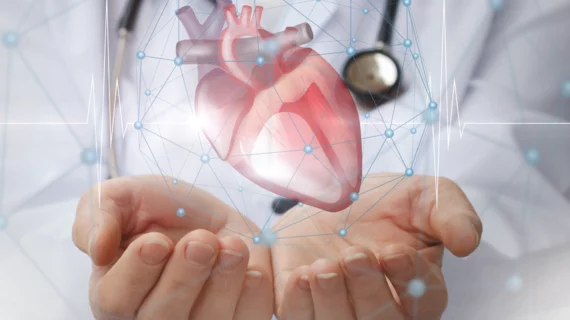Early anticoagulation after SAVR reduces stroke risk
Early anticoagulation after bioprosthetic aortic valve replacement (AVR) didn’t result in adverse clinical events or significantly affect aortic valve hemodynamics in a recent analysis of 4,832 heart patients, but it was linked to lower stroke rates in cases of surgical AVR (SAVR).
First author Tarun Chakravarty, MD, and colleagues explained in the Journal of the American College of Cardiology that since more people with severe aortic stenosis are living longer—yielding a population of patients with higher surgical risk profiles—there’s been a shift from mechanical to bioprosthetic valves during SAVR. The known bleeding risks associated with lifelong anticoagulation and increasing availability of valve-in-valve transcatheter AVR (TAVR) also support the use of bioprostheses.
“With expanding indications for TAVR, increasing use of bioprosthetic surgical valves and recent reports on subclinical leaflet thrombosis in both transcatheter and surgical bioprosthetic valves, there is considerable interest in adjunctive pharmacotherapy with antiplatelet and anticoagulant agents after bioprosthetic AVR for the prevention of bioprosthetic valve thrombosis and to further optimize valve hemodynamics, durability and clinical outcomes,” Chakravarty, of the Smidt Heart Institute at Cedars-Sinai Medical Center in Los Angeles, et al. wrote.
The optimal antithrombotic and antiplatelet strategy following bioprosthetic AVR has been a point of contention for years now, but, despite a lack of supporting evidence, the American College of Cardiology and American Heart Association in 2017 inked a recommendation for three months of anticoagulation post-SAVR and -TAVR in low-risk patients.
For their study, Chakravarty and his team collected data on antiplatelet and antithrombotic therapy from thousands of patients included in the pooled PARTNER 2 randomized trials and nonrandomized registries, performing echocardiograms at 30 days and one year post-AVR. The research comprised 3,889 TAVR and 943 SAVR patients.
After adjusting for valve size, annular diameter, atrial fibrillation and ejection fraction at the time of assessment of hemodynamics, the authors failed to find any significant difference in aortic valve mean gradients or aortic valve areas between patients discharged on anticoagulation versus those who weren’t, regardless of if they underwent SAVR or TAVR. A greater proportion of patients not discharged on anticoagulation had an increase in mean gradient of greater than 10 mmHg from 30 days to 1 year compared to those discharged on anticoagulation (2.3% vs. 1.1%, respectively).
Chakravarty and colleagues didn’t find any independent association between anticoagulation after TAVR and adverse outcomes including death and rehospitalization, but anticoagulation after SAVR was linked to significantly fewer strokes.
“The results of the present substudy of the PARTNER 2 trial and registries are consistent with...previous studies, at least for TAVR, where early anticoagulation was associated with increase in the risk of minor bleeding events with no significant effect on the risk of stroke,” Philippe Pibarot, DVM, PhD, and co-authors wrote in an editorial comment.
Pibarot, of the Institut Universitaire de Cardiologie et de Pneumologie de Québec in Canada, and colleagues underlined the “small but significant” protective effect on valve hemodynamic deterioration related to valve thrombosis observed in Chakravarty et al.’s work. That indicates a need for further randomized trials comparing single-antiplatelet therapy to anticoagulation with warfarin or DOACs in patients undergoing bioprosthetic AVR.
“The data from the present study and recent previous studies do not support systematic anticoagulation therapy for three to six months after AVR,” the editorialists wrote. “It may be preferable to adopt an individualized approach for early and long-term anticoagulation based on the presence or absence of procedural and patient factors that increase the risk of thromboembolism, valve thrombosis or bleeding for thromboembolisms or valve thrombosis.”

